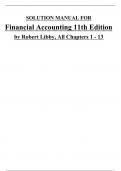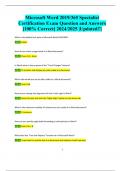Exam (elaborations)
Solution Manual for Financial Accounting 11th Edition Robert Libby, Patricia Libby, Complete Chapters 1 - 13, Verified Newest Version
- Book
- Financial Accounting
Solution Manual for Financial Accounting 11th Edition Robert Libby, Patricia Libby, Complete Chapters 1 - 13, Verified Newest Version Solution Manual for Financial Accounting 11th Edition Robert Libby, Patricia Libby, Complete Chapters 1 - 13, Verified Newest Version Solution Manual for Financial...
[Show more]





